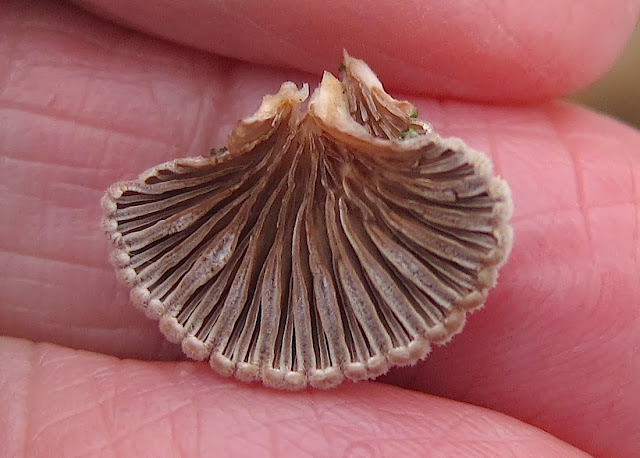For more than thirty years I've been wandering the woods and waterways of Saratoga County, New York, and regions nearby, looking closely, listening carefully, and recording what I experience. We are blessed in this region with an amazing amount of wilderness right at hand. With this blog I share my year-round adventures here, seeking out what wonders await in my own Madagascar close to home.
Tuesday, January 14, 2014
Winter Along the Kayaderosseras Creek
Nope. Not a good day outdoors. Fortyish, raining . . . . Why would I leave the comforts of a cat-cushioned couch to go slipping and slogging along the banks of an ice-choked Kayaderosseras Creek today? Well, it was just because that creek was ice choked that I saw the photos in the paper this morning and just had to head over to Ballston Spa to take a look for myself.
Yes indeed, that creek was surely choked with ice. Jammed with ice, so the water was rising and shoving huge chunks into people's backyards, crushing the shrubs and scraping the paint off sheds, while the creek kept coursing along, right over the banks and down into creekside cellars. As I stood on a bridge that was groaning a bit underfoot, it was quite an impressive, kind of scary, sight.
But just a mile or less downstream, all was serene along the Burl Trail at Gray's Crossing. It was here, last year, that the steep banks were beveled to allow high water to spread out over a floodplain, but today the water was well below flood stage, despite days of rain and snowmelting temperatures. I guess that ice jam upstream was holding the water back.
There was still lots of water falling from the sky, creating pretty crystalline drops on every twig and bud and catkin and cone and fluffy tuft of grass.
After this bank was cleared and reshaped, the state Department of Transportation planted the area with dozens of native trees. Some of them thrived, but others did not. The presence of all these ruffly fungi on the trunk of one young tree would indicate that the wood was dead and rotting.
I didn't recognize this fungus at first, since I've only ever seen Split-gill Fungus (Schizophyllum commune) when it's all dry and shriveled. A remarkable thing about this fungus is that it can dry up and shrivel again and again, but all it needs to come back to life is a little rainfall. No shortage of that, of late.
Here's a close-up view of the split gills that give this fungus its name. This is a particularly fascinating fungus with a very interesting sex life you can learn all about, if you like, by clicking here.
Along the water's edge was a tall weedy plant I do not recognize. I wouldn't have paid it any mind, such a scraggly thing it is, but its transparent seed pods were catching the light and thus catching my eye, so I had to stop and give it a closer look.
I have never seen seed pods like this, transparent as cellophane. Most likely, this plant is some kind of noxious weed brought in with all the new plantings, but who knows? It was certainly thriving along these banks, so I should be able to find it and identify it next summer when it comes into bloom. In the meantime, would any of my botanist friends like to hazard a guess what it is?
Update: I heard from Steve Young, chief botanist with the New York Natural Heritage Program, that this is a Mustard Family plant. As he explained it, the sides of the seed pods have fallen off, leaving only the translucent partition that divided the fruit, called a silique. Without leaves, though, we can't identify the plant as to species.
Subscribe to:
Post Comments (Atom)










4 comments:
You always find such interesting stuff, and get such good pictures, even in the middle of January! Though that ice jam does look a little scary so close to those houses.
Oooohhhh, the "Kaydeross," Ballston Spa...home...
Thanks for this.
That ice floe is definitely a little scary! I was at Woods Hollow today with a small ADK group. We were also enthralled by the icy coating on each pine needle and the water droplets on every twig. Very beautiful. Trails were solid ice, but we did fine with our traction gear. You captured the beauty of this day, despite the dangers.
As always, you got some wonderful photos. I especially like the grass and the little fungus.
Post a Comment